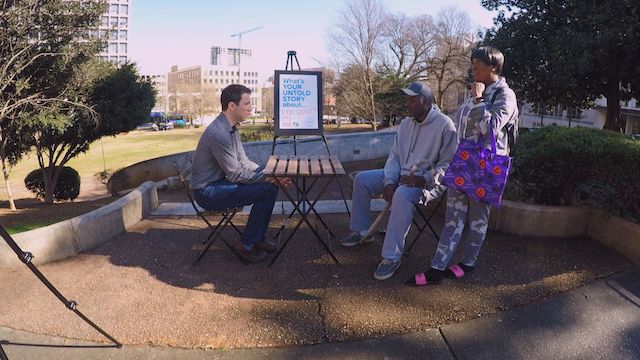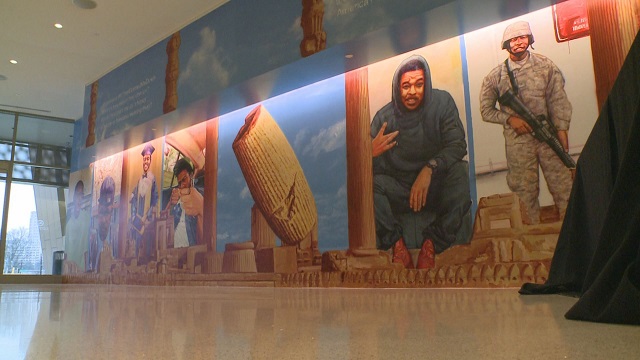This article can be found in the March/April 2019 issue of News Photographer, published through the NPPA.
I’m big on new.
In the last few years I’ve worked with drones, gimbals, and a mirrorless camera. I’ve created Instagram-first food segments and half-hour documentaries. I’ve done all of this from a newsroom – WXIA-TV in Atlanta – and under a company – TEGNA – that preaches innovation.
But when I wanted to attempt a new approach and story structure for a segment involving person-on-the-street interviews – a format that seems to funnel towards boring and uninformative – I reached back to a far earlier creation.
First, my producer and I bought a wooden fold-out table and two fold-out chairs at IKEA. Then, we asked our promotions team if we could commandeer an easel. Finally, we begged our in-house graphical guru to create a poster we could place on said easel, with a recurring question: “What’s your untold story about __________?” For each story we would do, we felt, we would fill in the blank with a relevant subject.
It worked.
On Thanksgiving week and requested stories about gratitude. On Mother’s Day and Father’s Day we found stories about parents. And this past Valentine’s Day, we learned stories about kind gestures. Each time, we shot in multiple locations that represented different communities in our region. We set up multiple cameras, from a traditional TV news kit to a GoPro and iPhone. We didn’t leave until we had interviewed at least three people.
Most importantly, when we did those interviews, we took our time. I didn’t ask for the quick sound bite and leave. I sat for around ten minutes, conversing and learning more about the person across the table. Often I discovered a more compelling story hidden beneath the initial back-and-forth.

